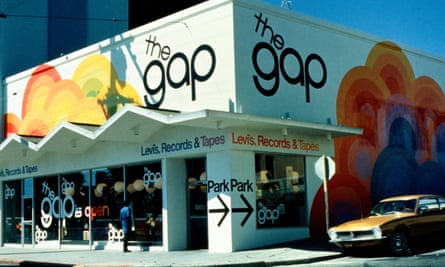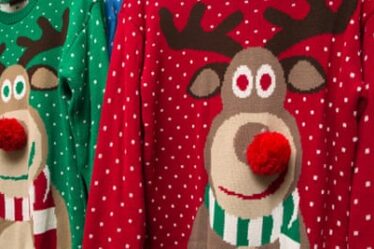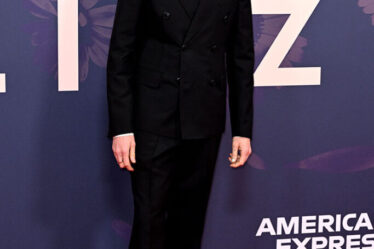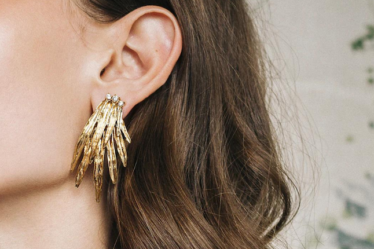
Look to the back of your wardrobe and you may be surprised to find you have some valuable fashion back there. Not a forgotten Chanel jacket or a pair of Louboutins, but old sweatshirts and jeans. A new trend for vintage Gap has seen demand for the high street store’s clothes from the 90s and 00s soar.
At the resale marketplace Depop, searches for “vintage Gap” went up 114% in June. On eBay, the number of items sold with “Y2KGap” in the listing has more than doubled in recent months. The retailer itself has also responded to the trend, launching its own vintage Gap collection online last month, sourced by Sean Wotherspoon – an American vintage collector and retailer.
He pulled together his range from clothes made in the three decades from the 80s which he found in Gap’s archive but also in flea markets and secondhand clothing shops around the world. Wotherspoon, a lifelong Gap fan, whose mother worked at the local store while he was growing up in Ashburn, Virginia, said he wanted to show how many staple styles had come from the chain. The range included menswear and womenswear. His collection sold out and more collaborations between Wotherspoon and Gap are planned.
“The first phase of our partnership with Sean kicked off in June and his curated pieces, hand-picked from around the world, were so well received by customers that it sold out in the first two days online,” says Christopher Goble, head of merchandising at Gap.
These high sales are in part due to a fascination with the decades’ style and culture. With denim, cargo trousers and tracksuits back in fashion, it would be strange if shoppers weren’t looking to buy these items from one of the most successful high street shops of that era. “Gap at that time was affordable and great quality,” says Amy Bannerman, preloved style director at eBay. “It’s always been one of my favourite places to buy T-shirts that stand the test of time. I have one that I bought from there about 16 years ago.”
Founded in 1969 by Doris and Don Fisher in San Francisco, The Gap sold jeans and records. Its name was a play on “the generation gap”. Aimed at teenagers and young people, the store was an instant hit and throughout the 70s and 80s the line expanded internationally. It was renowned as the place to buy quality basics at a price that pleased parents but with enough style to appeal to kids.
In the 90s there was a trend in fashion for mixing designer brands and high street which took Gap to a new level. Supermodels including Claudia Schiffer and Naomi Campbell wore head-to-toe Gap on the cover of American Vogue’s 100th issue in 1992. The company also began creating ad campaigns that cemented its reputation as part of the era’s zeitgeist. Spike Lee modelled its khakis and everyone from Joan Didion to Kirsten Dunst and Madonna dressed in Gap denim.
“The quality was excellent in the 90s and 00s,” says Bannerman, “much better than the offering on the high street now. They also had unusual designs” I have a Gap buttery-soft, blouse-style leather jacket bought in the 00s that looks like a Rick Owens design.”
The accessories designer Emma Hill joined Gap from Marc Jacobs in 2002. She left and became creative director of Mulberry in 2007.
after newsletter promotion
Many commentators think that the desire to bring a designer aesthetic to the basics behemoth was the reason Gap lost its groove in the mid to late 00s. A US designer called Patrick Robinson, who had worked at Giorgio Armani and Paco Rabanne, took over in 2007. But his colour combinations and take on Gap’s denim failed to find an audience.
By November 2019, Gap’s stock value was at $2.3bn, down from $4bn at the start of that year. In 2021, the company closed all of its 81 stores in the UK. In 2022, Gap’s collaboration with Kanye West – Yeezy Gap – was abruptly terminated after the rapper made racist and antisemitic comments.
The interest in vintage Gap is good news in an otherwise gloomy period for the retailer. Annual sales are half what they were in the early 2000s. The company may need more that 20-year-old sweatshirts to turn its fortunes around.
“This vintage drop was the first of a series we have coming up with Sean, and we can’t wait for our customers to see what we have in store next,” says Gobie. “Our collaboration allows us to create something unique that our customers can’t get anywhere else.”



